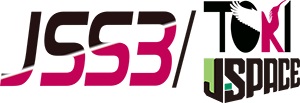Aerodynamics and Aeroacoustics Analysis for Multirotor
JAXA Supercomputer System Annual Report February 2023-January 2024
Report Number: R23ECMP27
Subject Category: Competitive Funding
- Responsible Representative: Kanako, Yasue, Aviation Technology Directorate, Aircraft Lifecycle Innovation Hub
- Contact Information: Hideaki Sugawara(sugawara.hideaki@jaxa.jp)
- Members: Mahiro Iwaki, Ryo Nishino, Hideaki Sugawara, Ryo Takahashi
Abstract
This work focuses on a blade design for multirotors such as drones and electric vertical take-off and landing (eVTOL) aircraft. The numerical simulations are conducted to investigate the blade designs that achieve both aerodynamic performance and low aerodynamic noise. The effect of blade design parameters on aerodynamic performance and noise are investigated for a multicopter and a lift-and-cruise type aircraft.
Reference URL
N/A
Reasons and benefits of using JAXA Supercomputer System
Large-scale analysis using a supercomputer is required to simulate a multirotor.
Achievements of the Year
The aerodynamic performance and noise of the multirotor are evaluated using the rotorcraft CFD tool, rFlow3D, and the rotorcraft noise analysis tool, rNoise. The multirotor constructed for the coaxial rotor system is assumed. Numerical simulations are performed under hovering and forward flight conditions. Numerical results show higher noise levels than single-rotor systems due to rapid pressure fluctuations when crossing upper and lower rotor blades. Furthermore, the tip vortices of the forward rotor interact with the rear rotor, affecting aerodynamic performance and noise.
Publications
– Peer-reviewed papers
Furukawa, et. al, “Rotor Design of an Urben Air Mobility for Compromising Aerodynamic.
Performance and Noise,” Journal of the Japan Society for Aeronautical and Space Sciences
– Non peer-reviewed papers
Furukawa, et. al, “Rotor Design Compromising Aerodynamic Performance and Noise”, The 55th Fluid Dynamics Conference/The 41st Aerospace Numerical Simulation Symposium
Usage of JSS
Computational Information
- Process Parallelization Methods: N/A
- Thread Parallelization Methods: OpenMP
- Number of Processes: 1
- Elapsed Time per Case: 504 Hour(s)
JSS3 Resources Used
Fraction of Usage in Total Resources*1(%): 0.13
Details
Please refer to System Configuration of JSS3 for the system configuration and major specifications of JSS3.
| System Name | CPU Resources Used(Core x Hours) | Fraction of Usage*2(%) |
|---|---|---|
| TOKI-SORA | 0.00 | 0.00 |
| TOKI-ST | 1037924.75 | 1.12 |
| TOKI-GP | 0.00 | 0.00 |
| TOKI-XM | 0.00 | 0.00 |
| TOKI-LM | 81.00 | 0.01 |
| TOKI-TST | 0.00 | 0.00 |
| TOKI-TGP | 0.00 | 0.00 |
| TOKI-TLM | 0.00 | 0.00 |
| File System Name | Storage Assigned(GiB) | Fraction of Usage*2(%) |
|---|---|---|
| /home | 1162.93 | 0.97 |
| /data and /data2 | 175071.47 | 1.08 |
| /ssd | 5220.80 | 0.49 |
| Archiver Name | Storage Used(TiB) | Fraction of Usage*2(%) |
|---|---|---|
| J-SPACE | 0.00 | 0.00 |
*1: Fraction of Usage in Total Resources: Weighted average of three resource types (Computing, File System, and Archiver).
*2: Fraction of Usage:Percentage of usage relative to each resource used in one year.
ISV Software Licenses Used
| ISV Software Licenses Used(Hours) | Fraction of Usage*2(%) | |
|---|---|---|
| ISV Software Licenses(Total) | 39.34 | 0.02 |
*2: Fraction of Usage:Percentage of usage relative to each resource used in one year.
JAXA Supercomputer System Annual Report February 2023-January 2024



